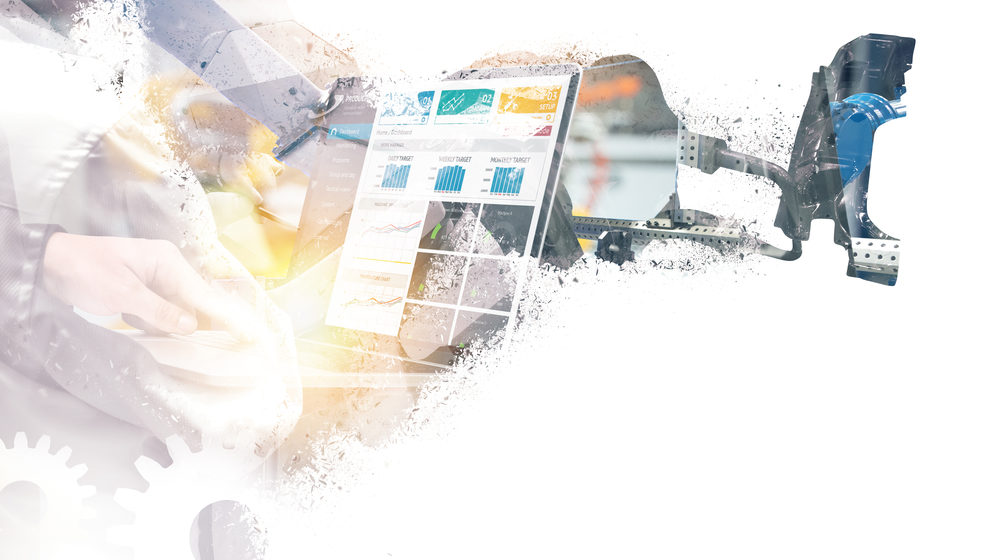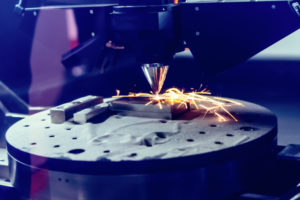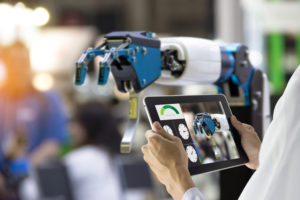
What the Future of Metal Fabrication Means for OEMs
October 23, 2018
It doesn’t matter what industry you are in – whether you’re in construction equipment, forestry, engine and turbine or other heavy machinery – the way your company makes what it sells is changing, and in some ways, faster than ever before. While the use of technology in metal fabrication is nothing new, the latest round of disruption is transforming just about everything we touch. With that in mind, here is an overview of what the future of metal fabrication means for OEMs.

The Internet of Making Things
The Internet of Things (IoT) is everywhere. According to research from market insight firm IoT Analytics, there are close to 7 billion IOT-enabled devices already installed globally. In fact, manufacturers in the U.S. alone have spent more than $70 million on IoT-devices alone. The IoT has very much become the internet of making things.
Internally, these devices help metal fabricators promote efficiency by increasing oversight of complex value streams. The explosion of IoT devices is also helping these supplier-partners to provide invaluable data to their OEM customers from scheduling and capacity management, to even design, material selection, and process optimization.
3D Printing Hits the Big Time
While this technology has been around for a while, it has largely been the domain of craft manufacturers and specialists. The reasons for this are simple. First, there is a heavy price tag. High-end 3D printers have cost $100,000 or more.

Second, many of these printers couldn’t meet the demands of manufacturing at scale without deploying an entire fleet of devices, due to speed challenges. Then there were issues, such a material limitation, machine maintenance, and even parts availability – unless the parts could be printed by the device themselves.
In addition, additive manufacturing processes are not always the best solutions for the part in question. For this reason, many design engineers continued to lean on subtractive manufacturing processes. However, this is changing. Today it is possible for metal fabricators to utilize 3D printing processes to meet customer demands through prototype fixture and workholding application development.
The Cloud Gets Down to Work
For years cloud computing was an administrative support tool, and not necessarily something which could help OEMs get stuff made. But when it comes to managing supply chains, applications developed for and hosted in the cloud are starting to leave their mark.
This is more than just hyperbole, as cloud technologies are helping teams to access data in real time. In fact, OEMs are utilizing the technology to share data with supplier-partners, including version updates and even automated loading. Beyond ‘remote control fabrication,’ cloud technology is also enabling greater transparency, including the ability to monitor machines for safety and maintenance issues.
Getting Virtual (or Augmented)
Other technologies which OEMs should be exploring with their metal fabrication partners include Virtual Reality and Augmented Reality. These developments are not only helping line workers to improve their ability to spot issues in manufacturing, but they’re also being used as a tool to speed up the implementation of corrective and/or preventive actions.
The result is the ability to test designs mid-process. Doing so not only saves process time but it can also save money. In addition, simulations such as these can make sure the goals of the design team are met when a new item goes into production, not after multiple rounds of product change requests.
Beyond this, AR is already being used in complex assembly, maintenance, quality assurance, and even for remote support. While a fully virtual environment might never be the norm in manufacturing, the technology is starting to impact the future of metal fabrication.
Mr. Roboto
While the rise of the machines in metal fabrication has been heralded for nearly 40 years, today’s industrial robots are more than just one-trick ponies. In some cases, the machines behind the fourth industrial revolution have the ability to outperform humans at tasks which require fine motor skills – something which was unthinkable just a decade ago.

In addition to added dexterity, today’s robots are also being powered by a combination of big data and Artificial Intelligence (AI) to remember in such a way that is like its human counterparts.
However, the robot revolution is not without its downsides, as many of the machines are prohibitively expensive – especially for Tier 3 suppliers. While this might slow the adoption of robotics in manufacturing, new business models to reduce the capital expenditures are starting to take shape.
These include lease models, colocation, and even revenue sharing. In doing so, the conversation shifts from a capital expenditure-driven model to one which focuses on operating expenses. This not only helps metal fabricators to balance costs when demand is uneven, but it helps OEMs to reach expanded capabilities without the need to vet new supplier-partners.
See how Miller Fabrication Solutions is incorporating the fourth industrial revolution – and the necessary security safeguards – into its systems and processes, by accessing the Miller brochure today.